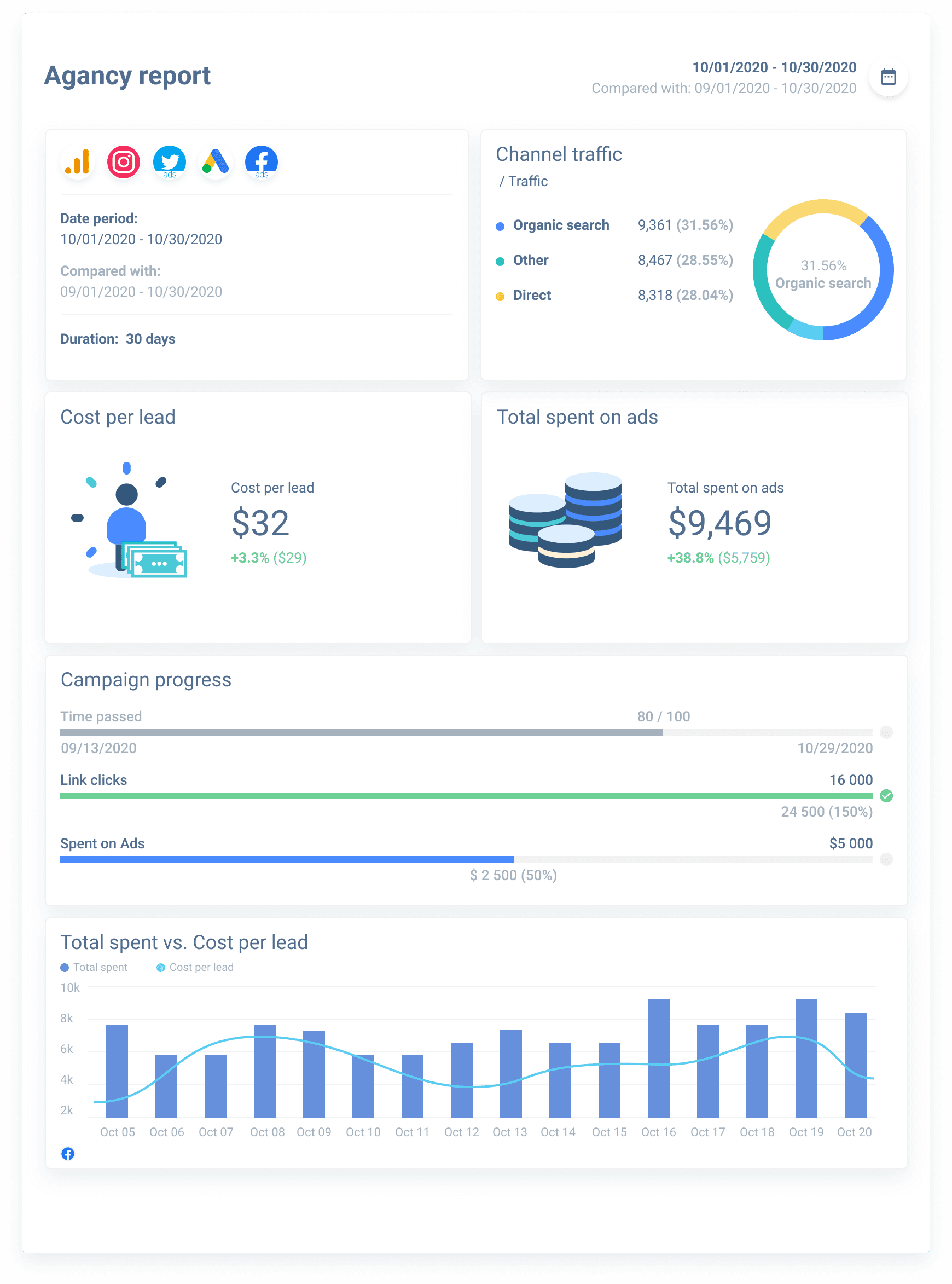Real-Time Analytics: What It Is, Examples and Benefits
Decision-making within a company or an organization strongly relies on business intelligence and data analysis. The sooner the analysis is available, the more swiftly decision-makers can act. Thankfully, the way data is collected has evolved, along with data processing capabilities. In other words, businesses can get customer analytics a lot easier and adapt their model or adjust their strategy accordingly.

Apr 16 2021 ● 6 min read

Perhaps the best example of the significant leaps in data analytics technology is so-called real-time analytics. Here we will explain what real-time analytics actually means, its benefits, and where it makes an important impact.
What is Real-Time Analytics?
Real-time analytics is the process of capturing, preparing, and reviewing or measuring data the moment it is transferred to the database. So, it basically allows users to either react or simply draw conclusions instantly. This is an amazing way to address potential big problems or to seize the opportunity before it's too late.
To give a more accurate definition - real-time analytics is the capability to see, analyze and perform information assessment the moment it becomes available within the system. This would imply that what users are seeing is not raw data but rather processed data.
This can be achieved with the use of different algorithms, data pipelines, and automated data cleansing tools. So, when you are pulling information from a data source, it is already filtered and adjusted into more meaningful data points.
How Does Real-Time Analytics Work?
Real-time data analysis requires a lot of computing power or software that can perform series of different actions. These activities can be broken into four major parts:
- Aggregation or data gathering - Pulling data from multiple data sources at the same time and using a data pipeline to transfer the information to data storage.
- Analytics engine - This is by far the most complex action as it includes deduplication and removal of irrelevant data, formating or transforming data, and creating business insights.
- Broker - A part of the program that makes the data available.
- Data processor or stream processor - Preoforms logical actions and analysis in real-time while sending and receiving inputs.
Basically, it is a carefully calibrated tool that captures inputs and then isolates relevant from irrelevant information, applies the analysis and displays the results, or even adjusts its work based on the analysis. Real-time analytics and processing in-memory capabilities allow us to have machine learning and create a more advanced AI.
One of the real-time analytics examples is YouTube. When you start watching specific content and based on that activity, the algorithm recommends new videos on the home page, which are similar to what you just watched. They also tell you why the new content was recommended.
We also see this on e-commerce sites when customer behaviour affects what products are displayed while browsing, and we also receive automated emails based on our purchase history.
Benefits of Real-Time Analytics
There are different businesses or industries that benefit from real-time analytics, as they can make a lot of processes automated. Some use cases include:
- Payment processing and risk scoring - Using software to process a payment and also for fraud detection by monitoring for unusual behaviour or risk score of a particular payment.
- Using customer behaviour in order to improve the user experience or simply to upsell products on an e-commerce website.
- Time efficiency - use it to improve customer support or employee training in the company by identifying struggles and offering solutions from a knowledge base.
- Navigation - Using real-time analytics, we can have better orientation and even receive instruction on how to reach a target location.
- Error detection - This technology also allows users to be immediately notified if something within the system went wrong and work on addressing the issue.
A great example of real-time analytics tools that companies can use to gain relevant data insights is Whatagraph. It boasts multiple integrations for social media platforms and other analytics applications that allow you to create a pipeline for multiple data streams, perform analysis, and it can generate a report.

Real-Time Analytics vs. Near-Real-Time Analytics
Real-time and near-real-time analytics are often used interchangeably, and that's because there are really small differences. Near-real-time data analytics are really fast, but technically they are not instant. In other words, it takes a portion of data within a specific time frame and provides analysis for it.
This means there is a data queue or small batch that is processed before the results are pushed to the users. Real-time analytics is all about detecting the activity instantly and giving you synchronous reporting on the situation.
Problems with Real-Time Analytics
Real-time analytics only have one flaw, and that is a very demanding infrastructure. Depending on your expectations, developing an in-house solution might take years. This is why analytics tools are so popular and usually a type of SaaS (software as a service) that businesses purchase.
In addition to development time, having enough storage for all of the data that you are collecting will also be expensive. That being said, industry giants might have specific demands when it comes to real-time data analytics, so in-house solutions might be the only options.
In this case, however, money is rarely an issue.
FAQ
What is the meaning of real-time data?
Real-time data (RTD) is information or data that becomes immediately available after the collection, but not in the form of raw data but rather as a meaningful insight. There is nearly no delay when the actionable information is provided, which is why it's called real-time data. Even though it is used in this way, the collected data can still be stored for a more comprehensive analysis.
Why is Real-Time Analytics important?
RTA is extremely useful for creating a better user experience and for strategic decision-making, which is why it is crucial in today's corporate world. A lot of modern tech and quality of life perks we enjoy today are a result of real-time analytics.
Moreover, the sheer amount of data that is available is growing, so filtering and finding a specific piece of information we need saves up a lot of our time.
What can real-time data tell you?
It can capture immediate feedback or response that you are actively tracking. Businesses can use it to see if someone mentioned their brand name on a certain platform. It can also tell us if someone is currently using our website, which allows businesses to improve their responsiveness online.
You can monitor your online ads campaign and make a decision on whether you want to pull the plug prematurely or keep it going for a longer period of time. Basically, it gives you directions if you need to act swiftly.
What does real-time reporting mean?
Real-time reporting is a type of practice that is used to collect up-to-the-minute inputs and relay that data to users in order to aid business intelligence and provide business insights. This way, managers can receive the current or latest information and make informed decisions on how to make the best out of the current situation.
Published on Apr 16 2021

WRITTEN BY
Indrė Jankutė-CarmaciuIndrė is a copywriter at Whatagraph with extensive experience in search engine optimization and public relations. She holds a degree in International Relations, while her professional background includes different marketing and advertising niches. She manages to merge marketing strategy and public speaking while educating readers on how to automate their businesses.